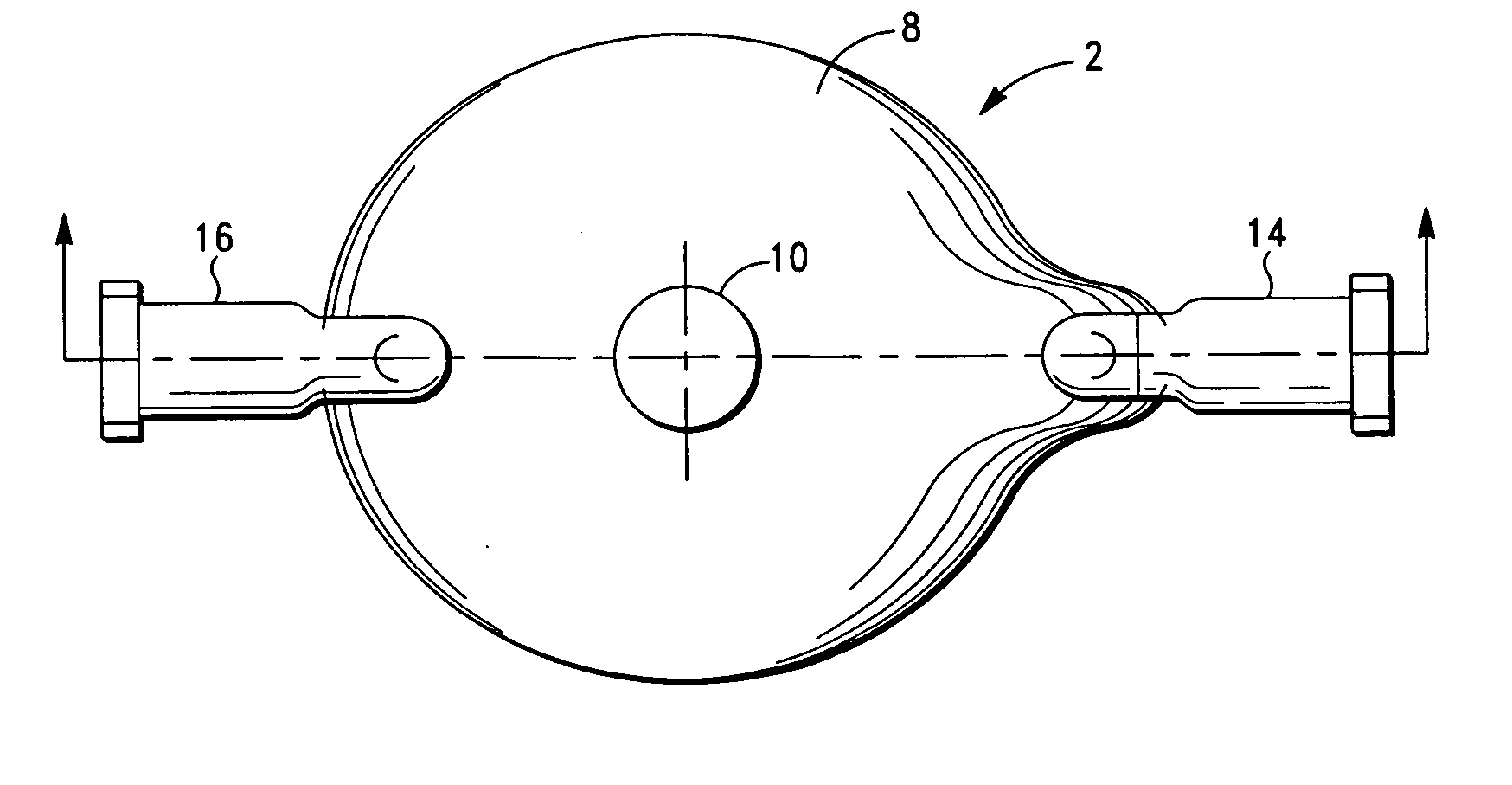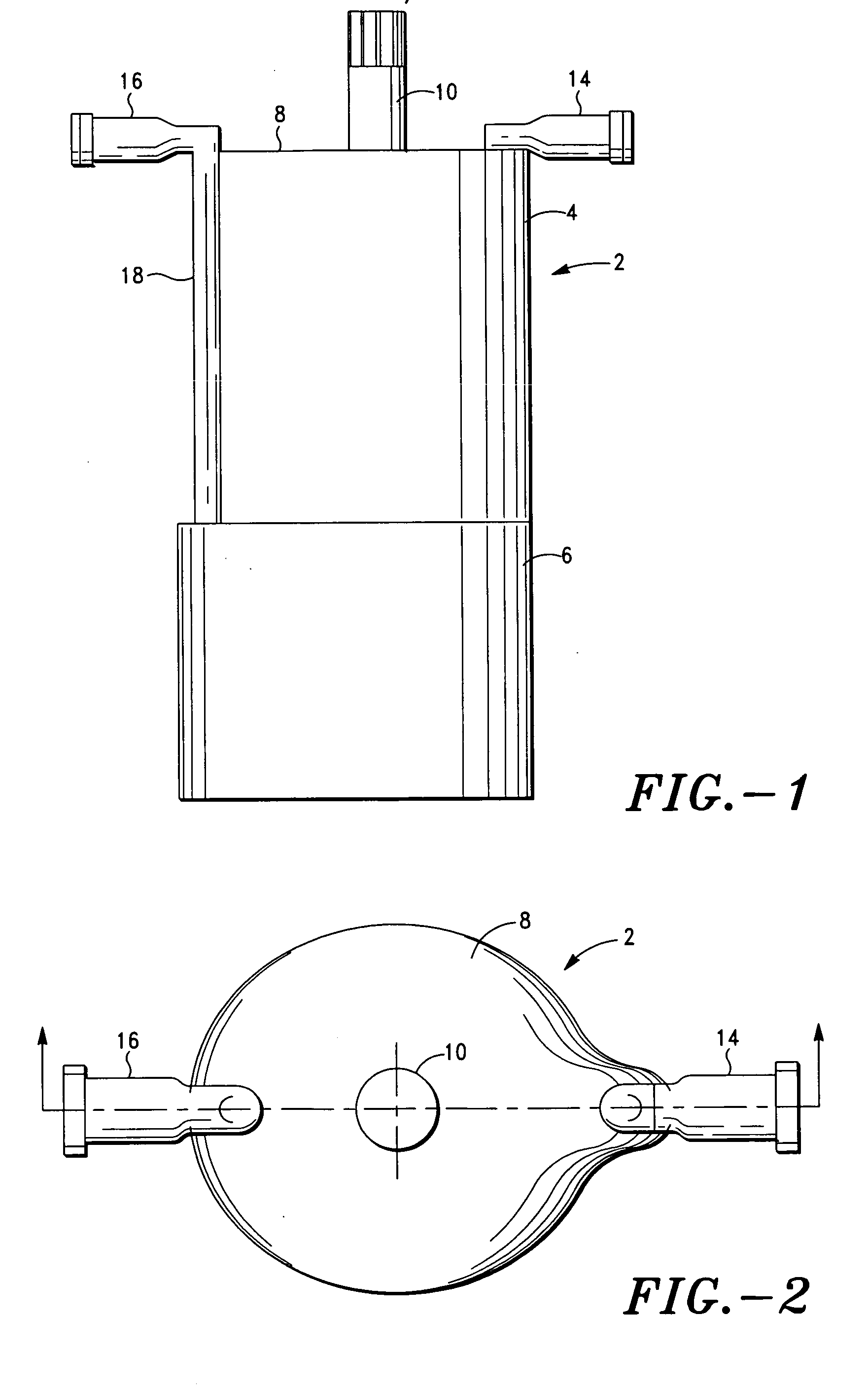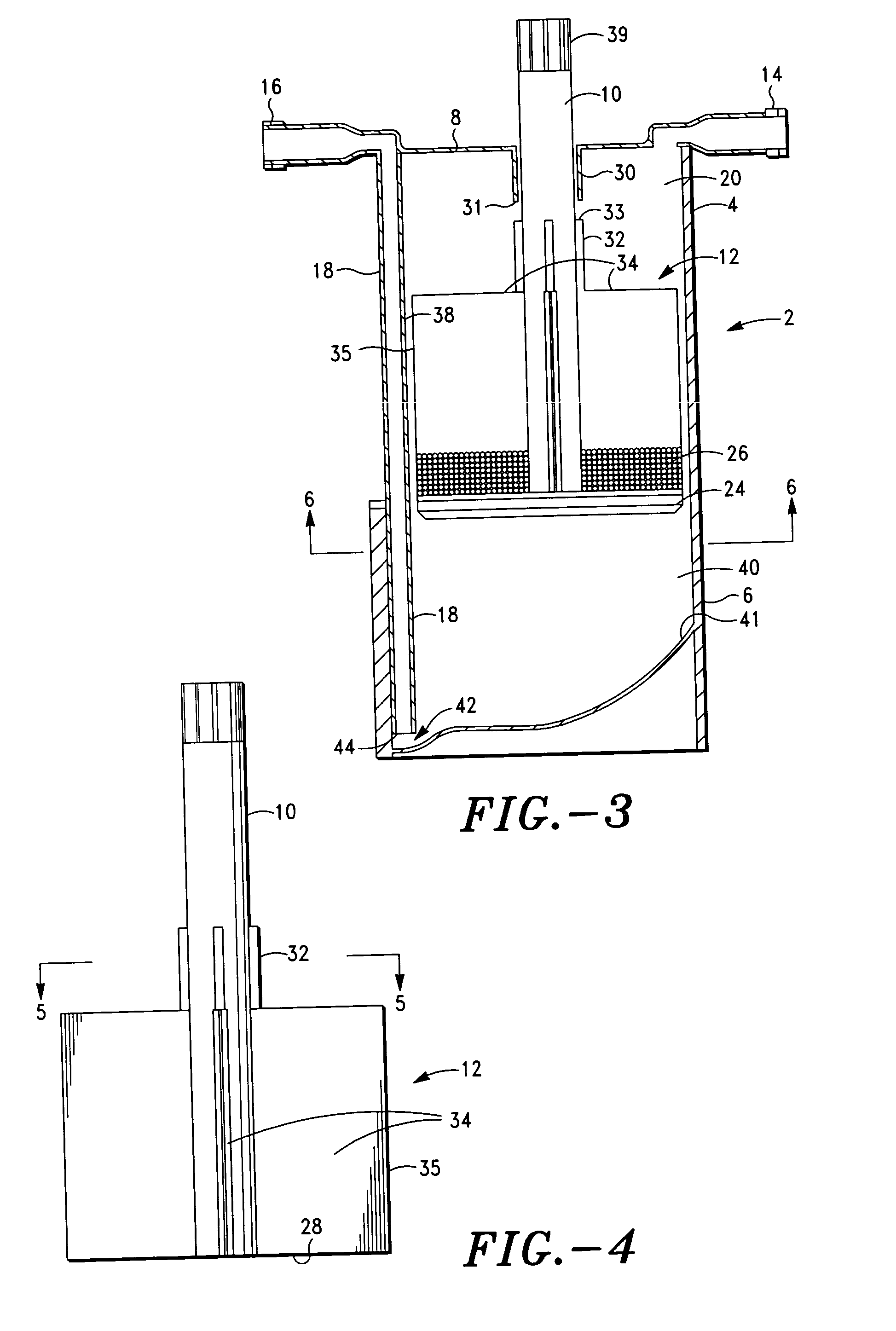Plasma concentrator device
a concentrator device and plasma technology, applied in other medical devices, biological material analysis, centrifugal force sediment separation, etc., can solve the problems of relatively heavy permanent components, designed for long-term durability, safety and reliability, and achieve plasma polarization reduction, plasma polarization reduction, and plasma polarization reduction
- Summary
- Abstract
- Description
- Claims
- Application Information
AI Technical Summary
Benefits of technology
Problems solved by technology
Method used
Image
Examples
Embodiment Construction
[0030] The term “separation gravity” is a centrifugal force that is sufficient to separate plasma concentrate from the surface of the concentrator gel beads and to cause separated plasma concentrate to flow through the filter.
[0031] The device is one component of an improvement over the complex plasma separating and concentrating device described in U.S. Pat. No. 5,585,007. A simple, disposable device described in commonly assigned, copending application Ser. No. 10 / 394,828 filed Mar. 21, 2003, rapidly separates plasma from blood using a conventional medical laboratory centrifuge. The device of this invention converts the plasma into an autologous concentrate highly useful as a tissue sealant and hemostat.
[0032] Referring to the drawings, FIG. 1 is a front view of the plasma concentrating device of this invention, and FIG. 2 is a top view of the plasma concentrating device shown in FIG. 1. This small compact device is suitable for processing up to 50 ml of plasma. The concentrator...
PUM
| Property | Measurement | Unit |
|---|---|---|
| diameter | aaaaa | aaaaa |
| gravity | aaaaa | aaaaa |
| centrifugal forces | aaaaa | aaaaa |
Abstract
Description
Claims
Application Information
 Login to View More
Login to View More - R&D
- Intellectual Property
- Life Sciences
- Materials
- Tech Scout
- Unparalleled Data Quality
- Higher Quality Content
- 60% Fewer Hallucinations
Browse by: Latest US Patents, China's latest patents, Technical Efficacy Thesaurus, Application Domain, Technology Topic, Popular Technical Reports.
© 2025 PatSnap. All rights reserved.Legal|Privacy policy|Modern Slavery Act Transparency Statement|Sitemap|About US| Contact US: help@patsnap.com



